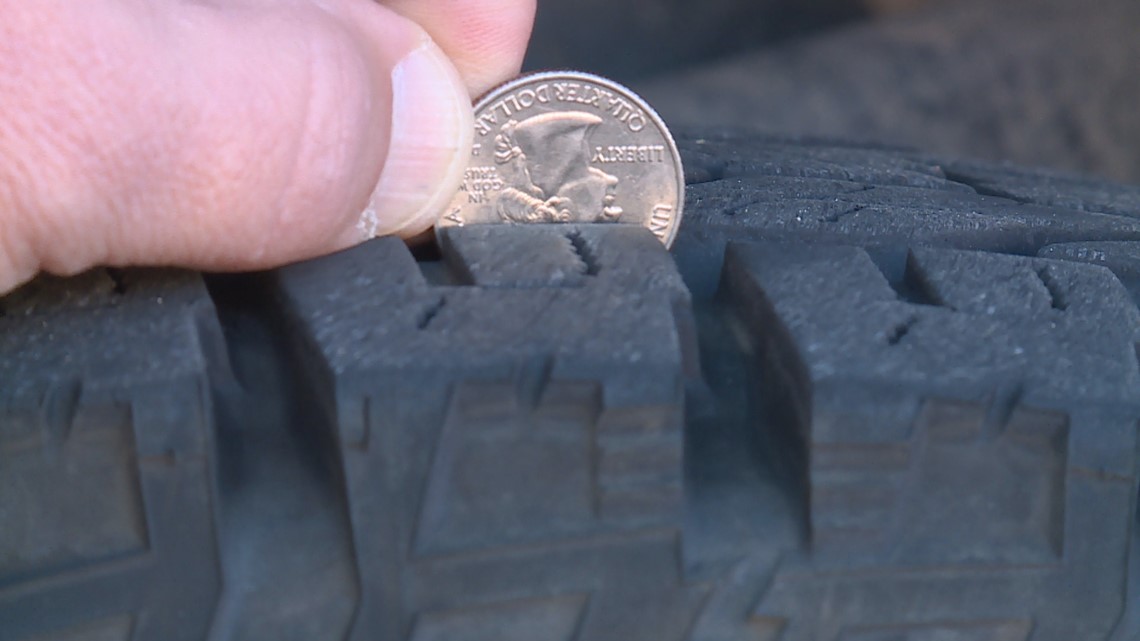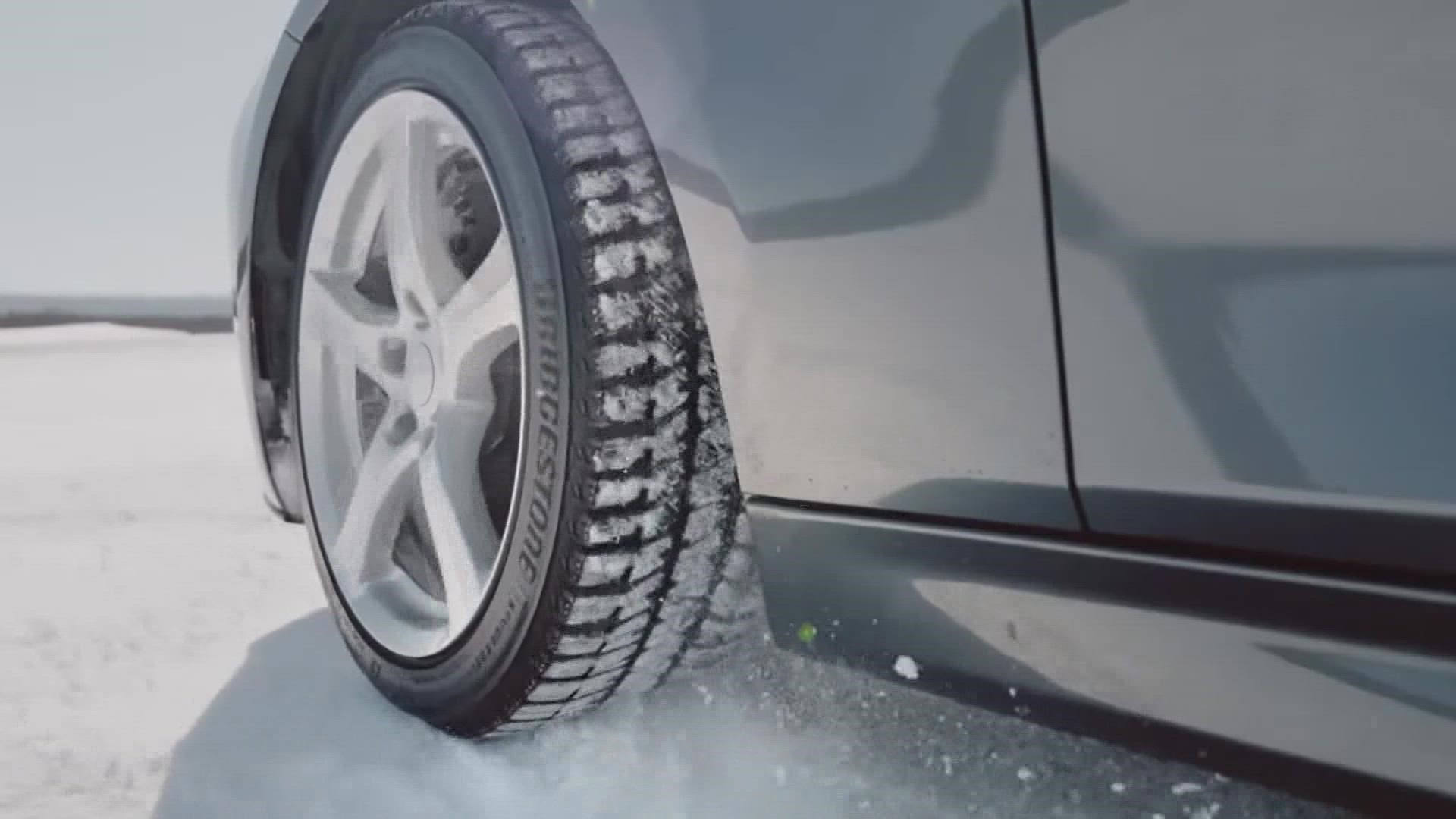DENVER — We’ve already seen winter get nasty on the roads this season, from the massive pileup on Sixth Avenue to multiple closures on I-70. There were even quite a few crashes during Tuesday morning's snow.
AAA Colorado says slower speed is the best way to avoid crashes, but getting your tires ready for winter before you even leave the house can help make winter drives safer and less stressful.
The key is keeping your tire in contact with the highway. When winter gets in between the rubber and the road, it’s the tread -- that cut pattern of grooves in the tire -- that keeps the friction.
So step one is getting the right type of tire. AAA Colorado recommends all drivers use a winter tire. If you choose an all-season tire, make sure it has the Mud Plus Snow designation, noted by the letters M + S on the sidewall of the tire, or by the snowflake and mountain symbol.
“These are tires that are chemically formulated with silica and other additives to perform their best when it’s below 40 degrees,” Skyler McKinley with AAA Colorado said.
It's also important to check the wear on your tires. When Colorado's traction law is in effect, it requires 3/16 of an inch of tire tread for winter driving conditions.
"You want to maximize the way that the tread is designed by tire experts over generations, to grip the road in snow and ice conditions," McKinley said.
He said you can check your tread depth by doing the quarter test. Simply take a quarter, flip it upside down and bury George Washington’s head in the tread. If the top of his head is covered by the tread, then there is at least 3/16 of an inch of tread.


And lastly, check the tire pressure. The cold air of winter will deflate your tires. Add pressure so the proper amount of tread stays in contact with the road.
“The name of the game with tires is to fill them up to the number on your doorjamb or your owner's manual for cold weather," McKinley said.
He said overinflation or underinflation can cause the tread to be less effective, and it also causes uneven and faster wear to your tires while not driving in winter weather.
He also said the effectiveness of winter tires can diminish over time due to dry rot. So even if your tires have the right depth of tread, they still need to be replaced every five to seven years.
SUGGESTED VIDEOS: Colorado Guide

